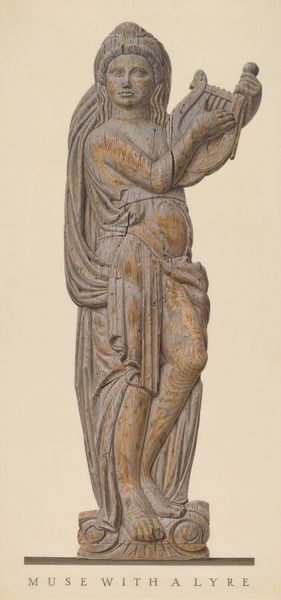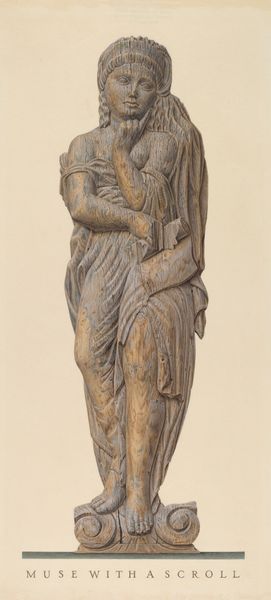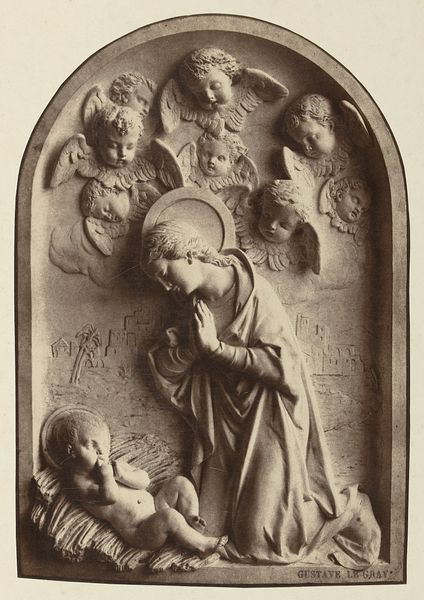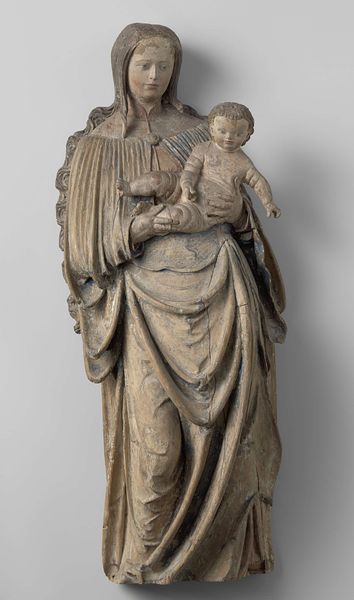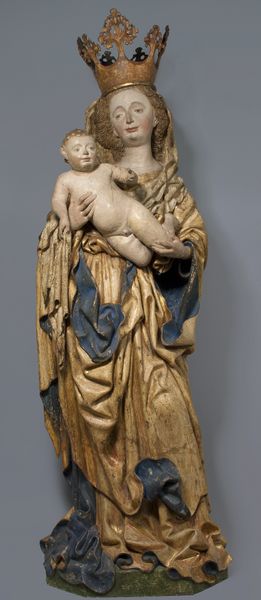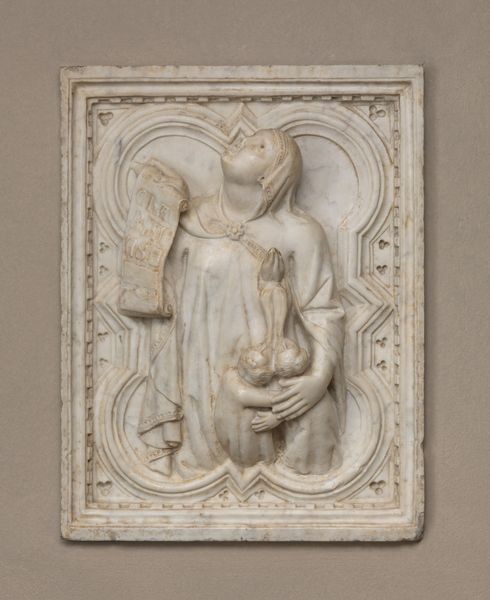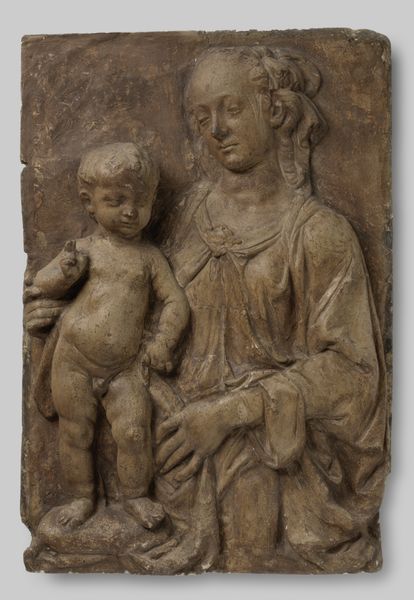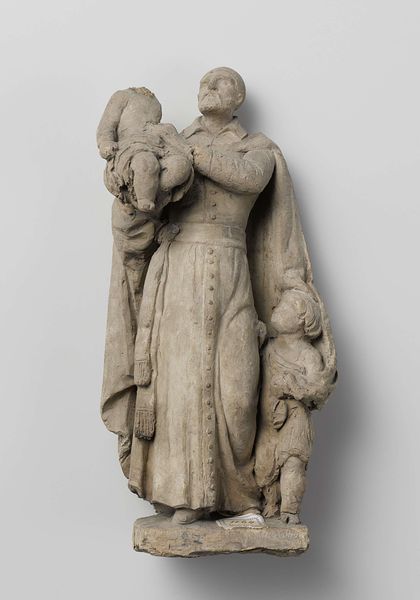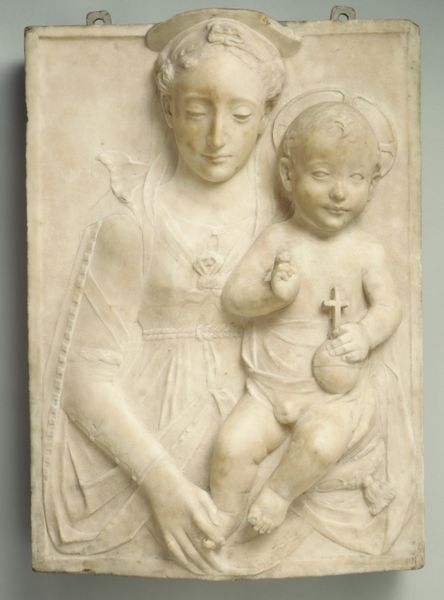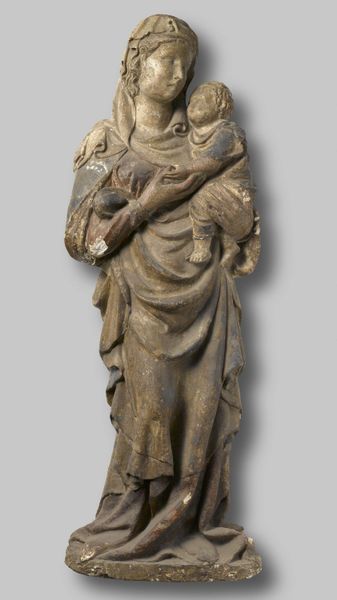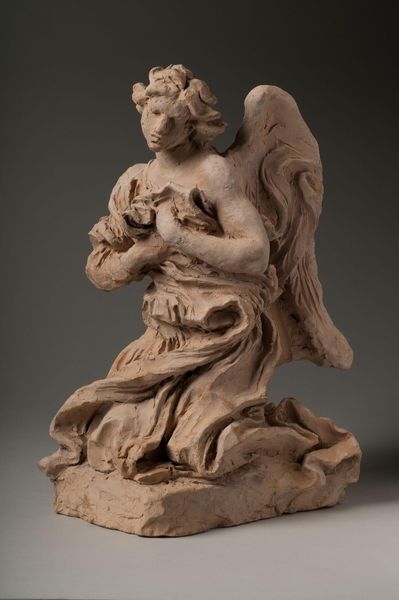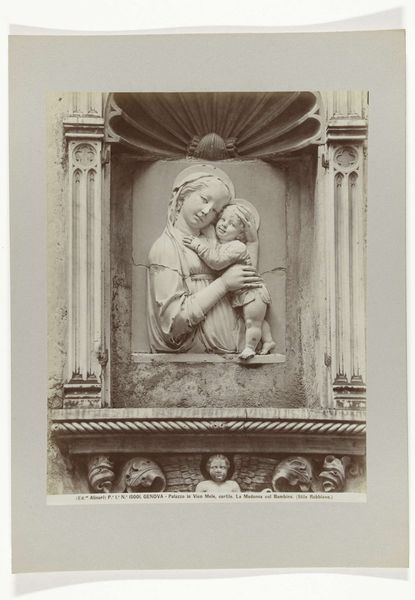
relief, sculpture, marble
#
portrait
#
sculpture
#
relief
#
figuration
#
sculpture
#
marble
#
italian-renaissance
Dimensions: height 41 cm, width 33 cm
Copyright: Rijks Museum: Open Domain
Curator: Before us, we have a marble relief sculpture from the Italian Renaissance, sometime between 1475 and 1500, titled "Maria met kind", attributed to Bartolomeo Bellano. Editor: It's tender, isn't it? The texture of the marble gives this sense of soft skin against skin. You can almost feel the weight of the child. Curator: Yes, it embodies that characteristic Renaissance focus on humanism, portraying the Virgin Mary and infant Jesus with striking naturalism and intimacy. Bellano's career flourished in Padua within Donatello's orbit, infusing classical ideals. Editor: That connection to Donatello really makes you consider the materiality further—the specific marble quarries that supplied his workshop and the skills passed down through generations of stonemasons. It's about more than just aesthetic perfection; it's about the labor that produces such serene moments, those conditions of artistic production that should never be ignored. Curator: And within those production networks, Bellano carved his own path. Notice how he deviates from classical serenity through his distinct treatment of drapery and the way the Virgin’s head tilts toward Jesus, suggesting the heavy weight of motherhood and sacrifice. Editor: It almost obscures her. The drapery folds feel like they actively obscure what is traditionally presented in such an upfront way in similar artworks. And that adds a really potent psychological complexity to the composition—perhaps Bellano is grappling with questions of motherhood or questioning the representation of the female in this era. Curator: Interesting interpretation! We need to consider the devotion this artwork elicits within Renaissance religious life—the personal connection and meditative aids in domestic settings as luxury commodities. The Bellano piece certainly spoke to those interests! Editor: Speaking materially, imagine this being sold. Consider the exchange of such precious marble that also held, presumably, such deep devotional worth. That, to me, brings a deeper value to something that, by most standards, simply "looks" serene or pious. Curator: Well, I can certainly see how studying material and historical elements offer such different perspectives—allowing the sculpture to engage us in fascinating conversation about its production and function. Editor: Indeed, it is the layering of all these dimensions that reveal the fullness of human labor and ingenuity—crafting new insight, indeed.
Comments
No comments
Be the first to comment and join the conversation on the ultimate creative platform.

